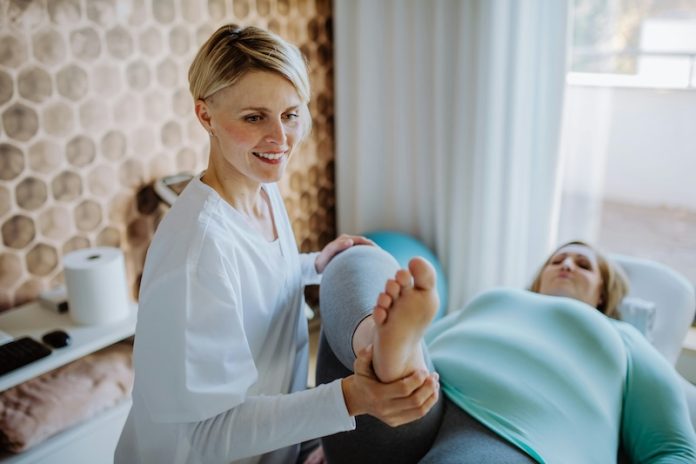
Researchers in Sweden have discovered three genetic mutations that significantly raise the risk of dangerous blood clots in the legs, also known as venous thrombosis.
The findings, published by a team at Lund University, offer new insight into why some people are more likely to develop clots—and how doctors might better prevent or treat them.
Blood clots can form in both arteries and veins, but the reasons and risks behind them are different.
Arterial clots usually happen when fatty deposits (plaque) inside hardened arteries rupture, triggering the body to form a clot. These clots can block blood flow and cause heart attacks or strokes.
Venous clots, however, form when blood flow slows down or pools—often in the legs. This happens during long periods of inactivity, like after surgery, bedrest, or sitting for hours on a plane.
In these cases, the body’s natural clotting system can kick in and cause a clot that blocks blood flow. If this clot breaks off and travels to the lungs, it can lead to pulmonary embolism, a potentially life-threatening condition.
“Venous thrombosis is one of the most common causes of death worldwide,” says Dr. Bengt Zöller, a physician and professor of general medicine at Lund University. “It’s common, but it doesn’t get the same attention as heart attacks and strokes caused by arterial clots.”
In Sweden alone, more than 10,000 people develop venous clots each year. As the population ages, these numbers are increasing. Age, obesity, and height are all known risk factors. Older people are more vulnerable, and about 10% of people over 80 will experience a blood clot.
Being tall or overweight also raises the risk because blood must travel farther and more slowly through larger leg veins, especially when people are inactive.
Unlike arteries, veins don’t suffer from atherosclerosis (hardening or clogging from fatty plaques) because blood pressure in veins is low.
So high blood pressure, cholesterol, and smoking—well-known risk factors for artery disease—are less important for venous clots. However, being overweight is a serious risk for venous clotting because it slows blood circulation and affects clotting factors.
There are other triggers, too. Blood clots are more likely after surgery, during infections or inflammation, or during pregnancy, when clotting factors increase. Birth control pills containing estrogen can also raise the risk, especially for people with a family history of blood clots.
Genes also play a major role. About half of venous thrombosis cases in Sweden have a genetic link. One well-known mutation is Factor V Leiden, which causes the blood to resist the action of a natural clot-preventing protein called APC. About 10% of Swedes have this mutation, which is the most common inherited clotting disorder in people of Indo-European descent.
Zöller and his team have now discovered three additional genetic variants—in the ABO, F8, and VWF genes—that also increase clot risk by 10% to 30% each. If a person carries five of these risk variants, their chance of developing a blood clot increases by 180%. Unlike Factor V Leiden, these newer mutations are found in many populations around the world, not just in Europe.
The study used data from over 30,000 people in the Malmö Kost Cancer study. The team hopes their findings will lead to more personalized treatment. For example, knowing someone’s gene profile might help doctors decide how long a person should take blood thinners after a clot.
“I think tailoring treatment based on individual risk will become more important,” Zöller said.
What Can You Do to Prevent Blood Clots?
While some risk factors like age and genetics can’t be changed, there are several steps you can take to reduce your chances of getting a blood clot:
- Stay active: Avoid sitting still for long periods, especially during long flights or hospital stays. Try to move your legs every hour.
- Wear support stockings: These can improve circulation in the legs when you need to sit or stand for long periods.
- Use blood thinners when needed: In high-risk situations such as surgery, illness, or cancer, doctors may recommend preventive medication.
- Avoid estrogen-containing contraceptives if you have a history of blood clots or a strong family history.
- Adopt a healthy lifestyle: Exercise regularly, maintain a healthy weight, avoid smoking, and choose a balanced diet—some studies suggest plant-based foods may lower risk.
- Get vaccinated: Some infections can activate the body’s clotting system, so protecting yourself from illness helps reduce clotting risk.
This new research not only reveals more about why some people are more prone to blood clots, but also opens the door to smarter and more personalized treatments that could save lives in the future.
If you care about cancer, please see recent studies about new way to increase the longevity of cancer survivors, and results showing new way to supercharge cancer-fighting T cells.
For more information about health, please see recent studies about how drinking milk affects risks of heart disease and cancer and results showing that vitamin D supplements could strongly reduce cancer death.
The research findings can be found in Research and Practice in Thrombosis and Haemostasis.
Copyright © 2025 Knowridge Science Report. All rights reserved.



